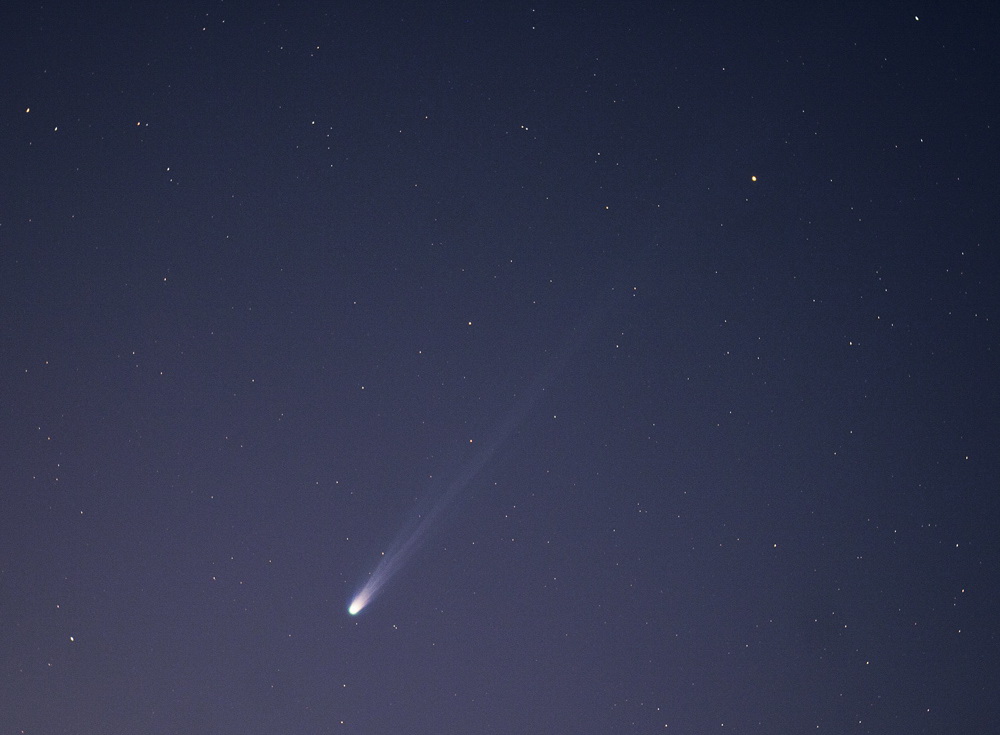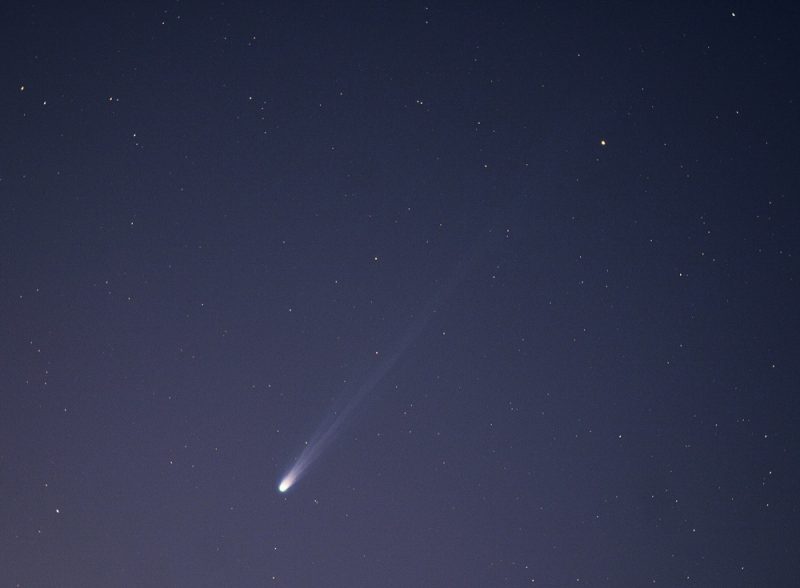On March 18, 1973, Luboš Kohoutek of Germany’s Hamburg Observatory discovered a tiny 16th-magnitude smudge — a comet — on a photograph he had taken two weeks earlier. Orbit calculations showed that the comet was still five times the Earth’s distance from the Sun, heading toward its closest point to the Sun on December 28, 1973. In early January 1974, Comet Kohoutek would emerge into the evening sky near Venus and Jupiter.
How bright would it be? In September 1973, NASA published a guide to Comet Kohoutek predicting the comet would reach magnitude –4, equal to Venus, making it the brightest dark-sky comet in centuries. Astronomy enthusiasts were ecstatic. (The same thing occurred when early Comet ISON news-media hype stated the comet would be as bright as the full Moon, neglecting to mention that the Sun would be right next to it in the sky.)

By December 1973, it was clear that something was wrong with Kohoutek. The so-called Comet of the Century was falling far below predictions. Kohoutek turned out to be, at its best, about fourth magnitude, barely visible to the naked eye. Primed for a “blazing spectacle” by media hype, the public shivered in early January looking near Venus and saw
. . . nothing.
Experienced observers who knew exactly where to look used binoculars to detect an unimpressive fuzz.
Comet Kohoutek confirmed for astronomers a very sorry lesson: The brightness of comets can be wildly unpredictable. Like ISON, Kohoutek was a comet on its initial visit to the inner solar system from the Oort cloud, the comet reservoir beyond Neptune. As Kohoutek warmed in its first exposure to solar heating, frozen methane and ammonia began to vaporize and form a cloud around the frozen comet nucleus while it was still at a huge distance from the Sun, giving the false impression that the activity would continue unabated closer to our star. Once the easily vaporized materials had dissipated, though, the rate of brightening declined sharply.
Comet Kohoutek will always be remembered as the comet that fizzled. After Kohoutek, astronomers learned to be more guarded about making brightness predictions. Then along came Comet West.
West was discovered in November 1975 from the European Southern Observatory in Chile. As the comet approached the Sun, it was much dimmer than Kohoutek was at similar distances, so it attracted little attention. But as fate would have it, Comet West did the opposite of Kohoutek and brightened much faster than predicted.
In early March 1976, the cosmic visitor moved out from behind the Sun and into the morning sky, where it appeared at magnitude –1. On March 7, a beautiful comet boasting a dust tail 30 degrees long adorned the predawn sky for northern-hemisphere observers.
By March 13, the show was over, unobserved by the general population. With the Kohoutek fiasco still fresh in their minds, news editors had ignored Comet West, so few people beyond the amateur-astronomy community even knew about it.
For the comet to become 50 times brighter than initial predictions, as West did, something unusual must have occurred. Around the time of perihelion, three huge chunks broke away from the comet’s nucleus, releasing far greater amounts of gas and dust than would be expected of an intact comet. The key is the dust. Dust particles are wonderful reflectors of light. Lots of dust pushed into the sweeping tail by the pressure of sunlight results in a bright tail.
Remember Comets Kohoutek, West, and ISON the next time you hear the phrase Comet of the Century.





